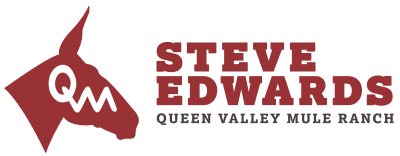Grass Founder In Mules and Donkeys
Is grass founder in mules and donkeys something you need to be concerned about? It’s been said that mules and donkeys are stronger and healthier than horses and immune to many equine diseases.
I wish that were true. Unfortunately, that is a myth.
Where did this myth come from? It is actually an exaggeration of the truth. While mules and donkeys are not immune to many of the diseases and illnesses that horses contract, they are more resistant to them.
Mules and donkeys are injured less often, they are less prone to colic, and they are less likely to develop common equine illnesses – with some exceptions, of course. They need the same basic care that is provided to horses because they can, and many will, suffer from the issues that plague horses.
So what about grass founder in mules and donkeys? Should that be a concern? Before we get to the answer, let’s make sure that we have a clear understanding of grass founder.
What Is Grass Founder?
Grass Founder, also known as laminitis, is a painful and potentially harmful hoof condition that can affect any and all equine, including mules and donkeys. There are many different circumstances that can lead to laminitis, the most prevalent issue is allowing an equine unlimited grazing in a pasture that’s growing new grass.
In a recent survey, access to a lush pasture was thought to be responsible for almost 50% of all cases of laminitis. That is a statistic that cannot be ignored. In most parts of the country, the risk for grass founder is highest during the spring and early summer when plants experience their greatest amount of growth.
When an equine has grass founder, they experience inflammation of the laminae in the foot. Laminae are accordion-like tissues, like a shock absorber, that attach the inner surface of the hoof wall to the coffin bone in the hoof, to keep the coffin bone in place. As the outside hoof wall widens, it pushes on the coffin bone, rotating it backwards causing excruciating pain. Very important stuff. You don’t have a hoof, you don’t have a mule.
An animal suffering from laminitis will experience less blood flow to the laminae, which begin to die and separate. The result is hoof wall separation, rotation of the coffin bone, and extreme pain. In severe cases, the coffin bone will actually rotate through the sole of the hoof where it becomes infected. If this comes to pass, the mule may need to be put down.
How does a donkey or mule get grass founder?
The reason mules, donkeys, overweight horses, and ponies get grass founder when eating rich, green grass is because it’s high in simple sugars and starches that are easily broken down by the bacteria in the equine large intestine.
What happens when these simple sugars breakdown, is it causes a production of a substance that can damage the basement membrane, a structure in the hoof. The basement membrane forms the “glue” that attaches the hoof wall to the coffin bone at the base of the hoof. Breakdown of the bond between the hoof wall and the bone is the process associated with laminitis.
Carbohydrate levels in the pasture are highest in the spring and summer months. On sunny days, the level of simple sugars rises in the morning until about noon and are lowest just before dawn. The worst time for an animal that tends to get grass founder to be in the pasture is between late morning and late afternoon in the spring or early summer. That’s not the only time grass founder can happen. It’s less common, but it can happen during a mild, wet autumn or after a drought, any time rainfall, sunlight, and daytime temperatures stimulate grass growth.
What are the signs of grass founder in a mule or donkey?
Foundered animals will assume a characteristic “sawhorse” stance with their hind feet up under their body and their front feet placed farther forward than normal. This is because the equine is trying to shift its weight off its painful front feet to its hind legs. Long standing cases of front foot laminitis may result in loss of muscle over the shoulder area as the donkey attempts to take most of its body weight on the hind limbs.
Thick, “cresty” neck and abnormal fat deposits can be a sign of grass founder. Check your equine often for heavy fat pockets or pads that show up on different parts of the body, such as across the neck, top of the ribs and the dock of the tail.
A mule’s or donkey’s pulse may throb and can be felt on either side of the fetlock. The donkey may appear ‘dull’ and we already know that a dull donkey is a veterinary emergency.
Grass-foundered equines move gingerly, like they’re walking on eggshells and are often unwilling to turn or move at all. In severe cases, they may refuse to stand. If your mule or donkey demonstrates these signs after being turned out on grass, immediately pull him out of the pasture and call the vet.
After equines are turned out to pasture, check them often for signs of laminitis such as heat in the feet and a pounding pulse at the back of the pastern. Check the white line of the hoof trimmings for signs of bruising and/or seedy toe. It can give you a lot of information about the health of the hoof.
Equines that suffer this condition are more susceptible to future incidents. Evidence of bouts of laminitis is revealed by ‘laminitic rings’ on the hoof wall. These can be distinguished from other event rings because they are not parallel with each other, but diverge towards the heels.
Summary of grass founder signs:
- Sawhorse Stance
- Throbbing Pulse
- Appearing Dull
- Laminitic Rings on the Hoof Wall
- Reluctant Movement
- Refusing to Stand
What are the best ways to treat grass founder?
If you suspect your donkey has laminitis, ensure it has access to a deep bed of shavings, easy access to food and water, then call your vet immediately. As with many diseases, prompt treatment can make all the difference. Your vet will probably prescribe painkillers such as phenylbutazone, commonly known as bute, a very common pain killer. Whole sole supports, rather than frog supports used in horses, may be advised. A sole is a flat piece of plastic, ¼” thick in the front and as much as 1” in the back that goes between the shoe and the laminitic hoof. There are different size pads, depending on the rotation of the coffin bone. X-rays may be taken to see the extent of rotation of the coffin bone. These pictures will be essential for the farrier to study for subsequent trimming.
Treatment will depend on the diagnosis, the animal’s health history, the veterinarian’s and farrier’s experience with founder, and their ability to assist each other in alleviating the symptoms, preventing further hoof structure damage and, over time, to restoring a more satisfactory shape to the hoof, and doing whatever is possible to improve the animal’s comfort and ability to move.
Some common treatments include antibiotics to combat infection, anti-endotoxins to reduce bacterial toxicity, anticoagulants, and vasodilators. A veterinarian may also prescribe medication to treat the animal’s pain, as mentioned above. Never give medications to an animal without an examination of the animal by your veterinarian and follow any dosage instructions.
A trained and experienced farrier may be able to offer therapeutic treatments according to your veterinarian’s advice through the use of specialized shoes and shoeing systems to reduce the stress that a long hoof toe places on the hoof structure, and to lift the animal’s heel to reduce stress to the tendons. Shoeing may utilize a combination of heart bars, supporting putty, or other corrective shoeing methods.
Suggestions for Avoiding Grass Founder in Your Mule or Donkey
- Limit their access to lush pasture. In those equines that have had grass founder before, it may be best to keep them off lush pasture entirely until the grass is more mature. See Getting Your Mule to Trust You and Catching Them In Pasture On Your Terms
- Restrict pasture time to only a few hours a day, avoiding those high-risk hours between late morning and late afternoon.
- Use a grazing muzzle which is a strap-on webbing or leather muzzle that allows the equine to eat some grass, but not a lot. They can drink with the muzzle on without difficulty, while allowing them to exercise.
- Fence off part of the pasture to make a small 20’x20’ paddock without grass.
- It’s imperative that the hooves are trimmed every eight weeks so that you and your farrier look at the hooves regularly.
- Float the teeth every Spring so that the mule or donkey is able to grind grass so it passes through their system without causing any problems. If the points of the teeth are flattened, they can grind without pain. The sharp points on their teeth cause them to not grind their feed properly.
Grass Founder is a disease which can result in pain, destruction of inner hoof tissues, and even the eventual rotation of the coffin bone within the hoof. It may involve one, two, or all four feet, and be mild to severe. No matter to what degree an animal is affected, some change is almost inevitable to the internal structure of the animal’s hooves and their future ability to walk or run normally. This disease is painful, crippling, complicated, expensive, and difficult to treat.
- Posted in: Articles, Everything
- Tagged: Articles, Everything



7 thoughts on “Grass Founder In Mules and Donkeys”
This the best article I have read on founder. Now I know why my pony developed the fatty lump on his side. My vet didn’t even know this. I have changed my mind about purchasing a donkey. Thankyou.
Thank you so much . This explains the symptoms and gives ideas how to handle them .Good article .
We bought a donkey “LuLu” and didn’t know that she had this condition. Her hooves had never been cut and curled around but her little face was just saying take me home and we did.
I don’t believe the vets recognize the signs that she was displaying of Founder. They just said to trim her down some.
We have been through 2 episodes with her. The first without painkillers. Poor donkey!!
I will be educated everyone on the signs now
Thank you so much for this information!
You are a longear angel!
We got a rescue mini donk a few months ago. Thank you so much for your article. We also have Shetland pony. I will be building a dry lot this weekend before spring arrives. I had no idea what foundering was but after reading your article i know have a good base on what to do and what to look for. Thank you so much.
Thank you for this very informative article. Recently my male minature donkey foundered and my new farrier advised me how to correct it. He was never in pain (at least didn’t show it) but developed a thick neck. Out of curriousity, will his neck ever thin down at all? I was just wondering if this might indicate the condition was receding or not. Thanks again.
My (2) females are rooting like a pig eating something underneath the grass, why?